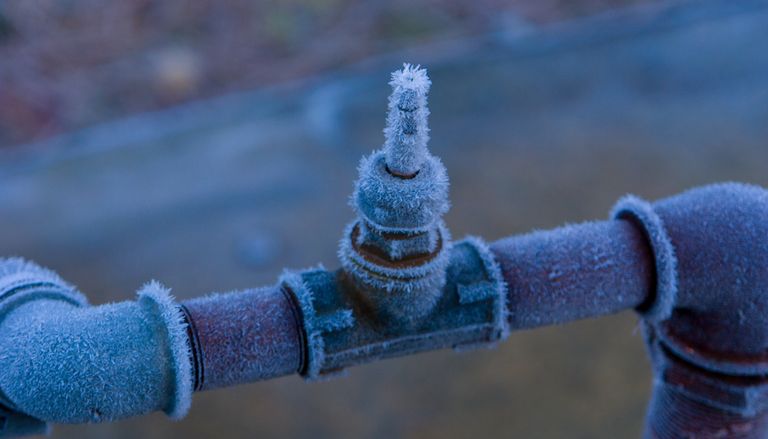Right here in the next paragraphs you can locate additional reliable guidance involving Preventing and dealing with frozen pipes.

Cold weather can wreak havoc on your pipes, especially by freezing pipes. Below's how to stop it from happening and what to do if it does.
Introduction
As temperatures drop, the danger of icy pipes rises, possibly leading to pricey fixings and water damages. Comprehending how to stop frozen pipes is crucial for house owners in cold climates.
Avoidance Tips
Protecting at risk pipelines
Cover pipelines in insulation sleeves or use warm tape to secure them from freezing temperature levels. Concentrate on pipelines in unheated or exterior areas of the home.
Home heating strategies
Keep interior rooms effectively heated, especially areas with plumbing. Open cabinet doors to allow warm air to circulate around pipelines under sinks.
Exactly how to recognize frozen pipes
Search for reduced water circulation from taps, unusual smells or sounds from pipes, and visible frost on subjected pipelines.
Long-Term Solutions
Structural changes
Consider rerouting pipelines far from exterior wall surfaces or unheated areas. Include additional insulation to attics, basements, and crawl spaces.
Upgrading insulation
Invest in high-quality insulation for pipelines, attic rooms, and wall surfaces. Proper insulation helps maintain regular temperatures and reduces the danger of frozen pipes.
Safeguarding Outdoor Pipes
Garden hoses and exterior taps
Disconnect and drain pipes yard tubes prior to winter. Mount frost-proof faucets or cover outside taps with insulated caps.
Comprehending Icy Pipelines
What triggers pipelines to ice up?
Pipelines ice up when exposed to temperatures listed below 32 ° F (0 ° C) for prolonged periods. As water inside the pipes ices up, it broadens, putting pressure on the pipeline wall surfaces and possibly causing them to burst.
Threats and damages
Icy pipes can cause water supply disturbances, home damage, and costly repair services. Burst pipes can flood homes and create comprehensive structural damage.
Indicators of Frozen Water Lines
Determining frozen pipelines early can stop them from rupturing.
What to Do If Your Pipes Freeze
Immediate actions to take
If you suspect icy pipelines, keep faucets available to relieve stress as the ice melts. Make use of a hairdryer or towels soaked in hot water to thaw pipes gradually.
Verdict
Preventing icy pipelines needs aggressive procedures and fast actions. By recognizing the causes, indicators, and preventive measures, property owners can protect their plumbing throughout winter.
5 Ways to Prevent Frozen Pipes
Drain Outdoor Faucets and Disconnect Hoses
First, close the shut-off valve that controls the flow of water in the pipe to your outdoor faucet. Then, head outside to disconnect and drain your hose and open the outdoor faucet to allow the water to completely drain out of the line. Turn off the faucet when done. Finally, head back to the shut-off valve and drain the remaining water inside the pipe into a bucket or container. Additionally, if you have a home irrigation system, you should consider hiring an expert to clear the system of water each year.
Insulate Pipes
One of the best and most cost-effective methods for preventing frozen water pipes is to wrap your pipes with insulation. This is especially important for areas in your home that aren’t exposed to heat, such as an attic. We suggest using foam sleeves, which can typically be found at your local hardware store.
Keep Heat Running at 65
Your pipes are located inside your walls, and the temperature there is much colder than the rest of the house. To prevent your pipes from freezing, The Insurance Information Institute suggests that you keep your home heated to at least 65 degrees, even when traveling. You may want to invest in smart devices that can keep an eye on the temperature in your home while you’re away.
Leave Water Dripping
Moving water — even a small trickle — can prevent ice from forming inside your pipes. When freezing temps are imminent, start a drip of water from all faucets that serve exposed pipes. Leaving a few faucets running will also help relieve pressure inside the pipes and help prevent a rupture if the water inside freezes.
Open Cupboard Doors
Warm your kitchen and bathroom pipes by opening cupboards and vanities. You should also leave your interior doors ajar to help warm air circulate evenly throughout your home.

We were guided to that article on How To Avoid Freezing Pipes from a good friend on our other domain. Enjoyed reading our write-up? Please quickly share it. Help someone else locate it. We appreciate your readership.
Click For More Information
Comments on “Essential Advice to Protect Against Frozen Plumbing in Cold Weather”